Download "user manual"
Transcript
NRC-CNRC NRC-CNRC Using PEGS4 Walter R. Nelson Stanford Linear Accelerator Center NRC-CNRC 2 Introduction z Primary purpose of PEGS4 is to create material data sets for subsequent use by EGSnrc (and EGS4, of course) z Operations necessary to accomplish this task include: – Selection of materials – Selection of energy cutoffs – Piecewise linear fitting – Creation of output data set for direct use by EGSnrc Using PEGS4 NRC-CNRC z 3 …Introduction (cont.) PEGS4 can provide other services too, such as: – Production of print plots of selected functions – Evaluation of functions at selected points – Comparison of functions with sampled spectra z In this lecture we will learn how to create media data sets z We will also take a quick look at some other PEGS4 services Using PEGS4 NRC-CNRC 4 The PEGS4 Connection to EGSnrc z PEGS4 has been modified very little for use with EGSnrc z However, the EGSnrc code has new features that – require considerably more data than provided by the PEGS4 code, and – this data is read in directly by means of the EGSnrc version of SUBROUTINE HATCH Using PEGS4 NRC-CNRC PEGS4 Documentation 5 z The PEGS4 User Manual is provided in Chapter 6 of the EGSnrc manual z It is essentially a reprint of the original PEGS4 manual for the EGS4 Code System—i.e., Appendix 3 of SLAC265 z However, a few additions have been made to PEGS4 since 1985 and these are explained at the beginning of Chapter 6 z Of particular note is the documentation for the parameters IUNRST, EPSTFL and IAPRIM Using PEGS4 NRC-CNRC Logical Relationship Between the Options of PEGS4 :ELEM: :MIXT: :COMP: :ENER: or and . :PLTN: :PLTI: :HPLT: :CALL: :MIMS: :STOP: 6 :TEST: :PWLF: :DECK: Using PEGS4 NRC-CNRC z The purpose of the ELEMent, COMPound and MIXTure options is to specify the material(s) used by the PEGS4 functions z Parameters needed to specify a material are: – Density (RHO) – Number of different kinds of elements (NE) – Atomic number of each kind (Z(I)) – Atomic weight of each kind (WA(I)) – Proportion of each kind: z By number (PZ(I)) for compounds z z By weight (RHOZ(I)) for mixtures PEGS4 has tables for for elements I=1 through 100: – The atomic symbol(ASYM(1:100)) – 7 The ELEM, COMP and MIXT Options The atomic weight(WATBL(1:100)) z PEGS4 also has a table of the densities of the elements (RHOTBL(1:100)) z For each option there is an associated table that we will discuss, in turn, next. Using PEGS4 NRC-CNRC The ELEM Option (1 of 3) ----------------------------------------------------------------CARD FORMAT VARIABLES READ COMMENTS ----------------------------------------------------------------ELEM1 (4A1) OPT(1:4) 'ELEM'. Means "select material that is an element." ELEM2 NAMELIST/INP/ RHO WA(1) IRAYL IUNRST ISSB EPSTFL IAPRIM 8 Optional. If given, this overrides the PEGS default density (g/cm**3) for the element. Optional. Atomic weight of element. If given, this overrides the PEGS default. Optional. Set to unity to included Rayleigh output. Optional. Set to unity for unrestricted collision stopping power. Optional. Set to unity to use own density effect parameters (see text below). Optional. Set to unity for ICRU-37 collision stopping power. Optional. Set to unity to normalize bremsstrahlung cross section to ICRU-37 radiative stopping power. Using PEGS4 NRC-CNRC The ELEM Option (2 of 3) ----------------------------------------------------------------CARD FORMAT VARIABLES READ COMMENTS ----------------------------------------------------------------ELEM3 (24A1, MEDIUM(1:24) Identifier assigned to data 6X,24A1) set to be produced. IDSTRN(1:24) ELEM4 (24(A2,1X)) ASYM(1) Optional. Identifer of medium name under which desired Sternheimer-SeltzerBerger coeffcients are given in PEGS. If not specified, the identifier in MEDIUM(1:24) is used. Atomic symbol for element. [It should be noted that when setting EPSTFL=1 in NAMELIST/INP/, the NRC scripts require that a file containing the ICRU-37 collision stopping powers be identified on the command line invoking the script] 9 Using PEGS4 NRC-CNRC z The following card setup illustrates how to use the ELEM option 1 2 3 4 z The ELEM Option (3 of 3) Column 123456789112345678921234567893123456789412345678..etc. ELEM &INP IAPRIM=1,IRAYL=1 &END PB (10 KEV TO 100 MEV) PB PB IAPRIM set to unity—invokes option to normalize the bremsstrahlung cross section (radiative stopping power will be same as ICRU-37) z IRAYL is set to unity — Rayleigh scattering included in PEGS4 output (note: user must still turn it on/off in User Code) 10 z The 24-character string: ‘PB (10 KEV TO 100 MEV) ‘ is selected to be the identifier used in subsequent EGS runs z PEGS4 will search for any Sternheimer-Seltzer_Berger coefficients identified by the 24-character string ‘PB ‘ z Since no other quantities have been added to the NAMELIST/INP/—i.e., between the &INP and &END delimiters—the default values for RHO, etc., will be used for the element PB Using PEGS4 NRC-CNRC z z The density effect in the dE/dx (Bethe-Bloch) formula – Treated extensively for many years by Sternheimer – A general formula is used and is given in terms of Sternheimer parameters A set of density-effect parameters have been created by SSB – z z 11 Sternheimer-Seltzer-Berger (SSB) Coefficients They are tabulated for 73 materials in PEGS4 (see Table 2.13.2 of SLAC265 (p.71-72)) The string IDSTRN(1:24) is used in order to make use of SSB density-effect parameters – If IDSTRN(1) is blank, then IDSTRN(1:24) is given the same name as MEDIUM(1:24) – If IDSTRN(1:24) cannot be found in the BLOCK DATA, the density effect is calculated from another general formula by Sternheimer and Peierls. Users can also supply their own SSB parameters by setting ISSB to unity Using PEGS4 NRC-CNRC The COMP Option (1 of 3) ----------------------------------------------------------------CARD FORMAT VARIABLES READ COMMENTS ----------------------------------------------------------------COMP1 (4A1) OPT(1:4) 'COMP'. Means "select material that is a compound." COMP2 NAMELIST/INP/ NE RHO (PZ(I),I=1,NE) GASP (WA(I),I=1,NE) IRAYL IUNRST ISSB EPSTFL IAPRIM 12 Number of elements in compound. Density (g/cm**3) of compound (at NTP for gases). Relative numbers of atoms in compound. Optional. Defines state of compound: zero (default) for solid or liquid, otherwise value gives gas pressure (atm). Optional. May be used to override default atomic weights (e.g., to allow for special isotopes). Same as for ELEM2. Same as for ELEM2. Same as for ELEM2. Same as for ELEM2. Same as for ELEM2. Using PEGS4 NRC-CNRC The COMP Option (2 of 3) ----------------------------------------------------------------CARD FORMAT VARIABLES READ COMMENTS ----------------------------------------------------------------COMP3 (24A1, 6X,24A1) COMP4 (24(A2, 1X)) 13 MEDIUM,IDSTRN (ASYM(I),I=1,NE) Same as for ELEM3. Atomic symbols for the atoms in the compound. Duplicates are allowed if several isotopes of the same element are present, or may be required for diatomic molecules (e.g. nitrogen gas). Using PEGS4 NRC-CNRC z The following card setup illustrates how to use the COMP option 1 2 3 4 Column 123456789112345678921234567893123456789412345678..etc. COMP &INP NE=2,PZ=2,1,RHO=1.0,IAPRIM=1 &END WATER H2O H O z The number of elements in the compound (NE) is 2 z The relative number of atoms in H2O is PZ=2,1 (we also could have written this out more specifically in the form PZ(1)=2,PZ(2)=1) z The density is the standard RHO=1.0 …but you must state what it is (i.e., it is not optional) z The 24-character string: ‘WATER be the identifier used in subsequent EGS runs z PEGS4 will search for any Sternheimer-Seltzer_Berger coefficients identified by the 24-character string ‘H2O ‘ z The atomic symbols are H and O --- note the order and the format 24(A2,1X)) 14 The COMP Option (3 of 3) ‘ is selected to Using PEGS4 NRC-CNRC The MIXT Option (1 of 2) ----------------------------------------------------------------CARD FORMAT VARIABLES READ COMMENTS ----------------------------------------------------------------MIXT1 (4A1) OPT(1:4) 'MIXT'. Means "select material that is a mixture." MIXT2 NAMELIST/INP/ Number of elements in mixture. RHO Density (g/cm**3) of mixture (at NTP for gases). (RHOZ(I),I=1,NE) Relative amount of atom in mixture (by weight). GASP Optional. Defines state of mixture: zero (default) for solid or liquid, otherwise value gives gas pressure (atm). (WA(I),I=1,NE) Optional. May be used to override default atomic weights. IRAYL Optional. Set to unity to included Rayleigh output. IUNRST Same as for ELEM2. ISSB Same as for ELEM2. EPSTFL Same as for ELEM2. IAPRIM Same as for ELEM2. 15 NE MIXT3 (24A1, MEDIUM,IDSTRN 6X,24A1) Same as for ELEM3. MIXT4 (24(A2, 1X)) Same as for COMP4. (ASYM(I),I=1,NE) Using PEGS4 NRC-CNRC z The MIXT Option (2 of 2) The following card setup illustrates how to use the MIXT option Column 123456789112345678921234567893123456789412345678..etc. 1 2 3 4 16 MIXT &INP NE=7,RHO=2.26,RHOZ=49.83,1.71,4.56,31.58,1.92,8.26,1.22 &END CONCRETE O NA AL SI K CA FE z There are 7 elements and the density is 2.26 g/cm3 z The relative amount of each atom by weight is written in the simple form RHOZ=49.83,1.17, …etc. z The 24-character string: ‘CONCRETE selected to be the identifier used in subsequent EGS runs z No character string was chosed for the Sternheimer identifier, so PEGS4 ‘ and this will not be will set equal to ‘CONCRETE found in the SSB table, so the approximation scheme will be used z The atomic symbols for the elements are specified in the fourth MIXT card (again, pay attention to the format: 24(A2,1X) ‘ is Using PEGS4 NRC-CNRC Additional Examples ----------------------------------------------------------------Material - Element is liquid Helium-3. Density and atomic weight overridden by user. Note that HELIUM-3 will not be found in SSB tables. ----------------------------------------------------------------Card 123456789112345678921234567893123456789412345678..etc. ELEM1 ELEM ELEM2 &INP RHO=0.178,WA(1)=3 &END ELEM3 HELIUM-3 ELEM4 HE ----------------------------------------------------------------Material - Compound is Nitrogen gas (a diatomic molecule). Density and gas pressure overridden by user. ----------------------------------------------------------------Card 123456789112345678921234567893123456789412345678..etc. COMP1 COMP COMP2 &INP NE=2,PZ=1,1,RHO=0.808,GASP=2 &END COMP3 NITROGEN (2 ATM) N2-GAS COMP4 N N 17 Using PEGS4 NRC-CNRC …Additional Examples (cont.) ----------------------------------------------------------------Material - Compound is sodium iodide with IDSTRN(1:24) defaulting to MEDIUM(1:24)....but NAI will be found in SSB tables. ----------------------------------------------------------------Card 123456789112345678921234567893123456789412345678..etc. COMP1 COMP COMP2 &INP NE=2,RHO=3.667,PZ(1)=1,PZ(2)=1 &END COMP3 NAI COMP4 NA I ----------------------------------------------------------------Material - Compound is Pilot-B scintillator. Data taken from Physics Letters B204, April 1988 (density=1.032, atomic ratio H/C=1.10). Material is in SSB table. ----------------------------------------------------------------Card 123456789112345678921234567893123456789412345678..etc. COMP1 COMP COMP2 &INP NE=2,RHO=1.032,PZ(1)=1,PZ(2)=1.10 &END COMP3 PILOT-B POLYSTYRENE COMP4 C H 18 Using PEGS4 NRC-CNRC …Additional Examples (cont.) ----------------------------------------------------------------Material - Mixture is lead glass, consisting of five specified elements (1 per cent trace elements unspecified). Density effect calculated by Sternheimer-Peierls. ----------------------------------------------------------------Card 123456789112345678921234567893123456789412345678..etc. MIXT1 MIXT MIXT2 &INP NE=5,RHO=3.61,RHOZ=41.8,21.0,29.0,5.0,2.2 &END MIXT3 LEAD GLASS MIXT4 PB SI O K NA ----------------------------------------------------------------Material - Compound is Bismuth Germanate (BGO). ----------------------------------------------------------------Card 123456789112345678921234567893123456789412345678..etc. COMP1 COMP COMP2 &INP NE=3,RHO=7.13,PZ=4,3,12 &END COMP3 BGO COMP4 BI GE O ----------------------------------------------------------------Material - Compound is Liquid Hydrogen. ----------------------------------------------------------------Card 123456789112345678921234567893123456789412345678..etc. COMP1 COMP COMP2 &INP NE=2,RHO=7.08E-2,PZ=1,1 &END COMP3 LIQUID HYDROGEN H2-LIQUID COMP4 H H 19 Using PEGS4 NRC-CNRC The ENER Option ----------------------------------------------------------------CARD FORMAT VARIABLES READ COMMENTS ----------------------------------------------------------------ENER1 (4A1) OPT(1:4) 'ENER'. Means "select energy limits." ENER2 NAMELIST/INP/ AE UE AP UP Lower cutoff energy (total) for charged particle transport (MeV). Upper limit energy (total) for charged particle transport (MeV). Lower cutoff energy for photon transport (MeV). Upper limit energy for photon transport (MeV). Note: If the user supplies negative values for the energy limits above, the absolute values given will be interpreted as in units of the electron rest mass energy. Thus, AE=-1 is equivalent to AE=0.511 MeV. The following card setup illustrates how to use ENER option 1 2 20 123456789112345678921234567893123456789412345678..etc. ENER &INP AE=0.521,UE=100.,AP=0.001,UP=100. &END Using PEGS4 NRC-CNRC The Options: PWLF and DECK 21 z The minimal data setup for PEGS4 consists of choosing ELEM (or MIXT or COMP), followed by ENER, and then followed by PWLF and DECK z For the general case, the PWLF and DECK options are very trivial (but necessary)–they consist of the option name followed by a blank NAMELIST-read card: &INP &END Using PEGS4 NRC-CNRC z Together with one of the above examples, the entire card card setup might consist of the following ten cards (for BGO detector): 1 2 3 4 5 6 7 8 9 10 z 22 The Options: PWLF and DECK (cont.) 123456789112345678921234567893123456789412345678..etc. COMP &INP NE=3,RHO=7.13,PZ=4,3,12 &END BGO BI GE O ENER &INP AE=0.521,UE=100.,AP=0.001,UP=100. &END PWLF &INP &END DECK &INP &END The TEST option is also available for obtaining plots of all functions that the PWLF option fits Using PEGS4 NRC-CNRC Examples of PEGS4 Output -------------------------------------------------------------------------------MEDIUM=WOOD ,STERNCID=WOOD COMP,RHO= 5.0000E-01,NE= 3 ASYM=C ,Z= 6.,A= 12.011,PZ= 6.00000E+00,RHOZ= 7.20669E+01 ASYM=H ,Z= 1.,A= 1.008,PZ= 5.00000E+00,RHOZ= 5.03985E+00 ASYM=O ,Z= 8.,A= 15.999,PZ= 5.00000E+00,RHOZ= 7.99970E+01 7.65637E+01 5.21000E-01 1.00000E-02 5.05110E+01 5.00000E+01 0 199 0 149 0 0 0 1 0 9.99983E-01 -2.09272E-01 4.80231E-02 9.95902E-01 -2.24627E-01 500 or more cards follow --------------------------------------------------------------------------------------------------------------------------------------------------------------MEDIUM=AIR AT NTP ,STERNCID=AIR-GAS MIXT,RHO= 1.2050E-03,NE= 3,GASP= 1.0000E+00 ASYM=N ,Z= 7.,A= 14.007,PZ= 5.57090E+00,RHOZ= 7.80300E+01 ASYM=O ,Z= 8.,A= 15.999,PZ= 1.31442E+00,RHOZ= 2.10300E+01 ASYM=AR,Z=18.,A= 39.948,PZ= 2.35306E-02,RHOZ= 9.40000E-01 3.05535E+04 1.50000E+00 1.00000E-01 1.00000E+05 1.00000E+05 0 200 0 150 0 0 0 0 0 9.99983E-01 -2.10279E-01 4.82540E-02 9.95882E-01 -2.25707E-01 500 or more cards follow -------------------------------------------------------------------------------- 23 Using PEGS4 NRC-CNRC …PEGS4 Output (cont.) ------------------------------------------------------------------------------MEDIUM=ISOOCTANE ,STERNCID=ISOOCTANE COMP,RHO= 6.9190E-01,NE= 2 ASYM=C ,Z= 6.,A= 12.011,PZ= 8.00000E+00,RHOZ= 9.60892E+01 ASYM=H ,Z= 1.,A= 1.008,PZ= 1.80000E+01,RHOZ= 1.81434E+01 6.50520E+01 5.21000E-01 1.00000E-02 5.05110E+01 5.00000E+01 0 199 0 149 0 0 0 0 0 9.99983E-01 -2.04659E-01 4.69644E-02 9.95992E-01 -2.19675E-01 500 or more cards follow ------------------------------------------------------------------------------------------------------------------------------------------------------------MEDIUM=AU (USING NEW PEGS4N) ,STERNCID=AU ELEM,RHO= 1.9300E+01,NE= 1, IUNRST=0, EPSTFL=0, IAPRIM=1 ASYM=AU,Z=79.,A= 196.987,PZ= 1.00000E+00,RHOZ= 1.96987E+02 3.34846E-01 5.21000E-01 1.00000E-03 1.00000E+01 1.00000E+01 0 199 0 150 0 0 0 1 0 9.99979E-01 -2.53604E-01 5.81963E-02 9.95034E-01 -2.72211E-01 500 or more cards follow ------------------------------------------------------------------------------- 24 Using PEGS4 NRC-CNRC The CALL Option ----------------------------------------------------------------CARD FORMAT VARIABLES READ COMMENTS ----------------------------------------------------------------CALL1 (4A1) OPT(1:4) 'CALL'. Means "Call the designated function and print value." CALL2 NAMELIST/INP/ z XP(1:4) Values for up to four arguments of the function. The following card setup illustrates the CALL option: 1 2 3 4 5 6 7 8 9 10 123456789112345678921234567893123456789412345678..etc. ELEM &INP &END PB PB CALL &INP XP(1)=49.99 &END GMFP CALL &INP XP(1)=50.01 &END GMFP which produces the following PEGS4 output: FUNCTION CALL: FUNCTION CALL: 25 1.95522 1.97485 = GMFP = GMFP OF OF 49.9900 50.0100 Using PEGS4

























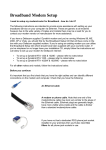


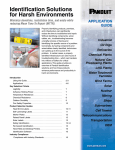
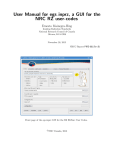

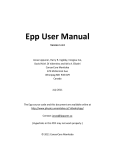
![[U4.63.01] Opérateur CALC_CHAR_SEISME](http://vs1.manualzilla.com/store/data/006373399_1-955233ee95b949e467788fe216e33f11-150x150.png)

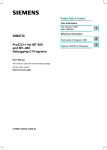
![[U4.63.01] Opérateur CALC_CHAR_SEISME](http://vs1.manualzilla.com/store/data/006375751_1-063455accbcbbe45927ff9adc15db97f-150x150.png)
